Jaw Shaping in Seoul
Search and Compare the Best Clinics and Doctors at the Lowest Prices for Jaw Shaping in Seoul

Find the best clinics for Jaw Shaping in Seoul
With Medijump you can browse 12 facilities offering Jaw Shaping procedures in Seoul. The cheapest price available is $3,745 in Seoul
Jaw Shaping in South Korea
Price: $ 3,745
Jaw Shaping in Seoul
Price: $ 3,745
Jaw Shaping in Daejeon
Price: $ 7,892
Malaysia offers the best prices Worldwide
Price: $ 672
From 8 verified reviews
Lucy Thornton, 31 August 2020
I would highly recommend Nana Plastic Surgery Clinic. I had a full mommy makeover and Dr Hwang did a great job! The language barrier was never a problem thanks to the amazing English consultant Kylie. She has put in hours helping me …
From 2 verified reviews
윤요미, 01 January 2020
Very kind and nice
From 2 verified reviews
Patcha Ying Ying, 17 December 2020
I travel from Thailand to have bigger breasts and I glad to come here. More expensive than Thailand, but I not trust doctor here so much as korean
From 1 verified reviews
Jui , 01 February 2020
Professional and diligent throughout the whole process. Many many thanks to all involved, including MyMedi
From 15 verified reviews
yully, 22 November 2019
It was good to have a consultation with the director who specializes in surgery surgery. The results are also satisfactory!
From 15 verified reviews
sasha naicker, 19 February 2020
I did Rhinoplasty, ear surgery and lower blepharoplasty at BK, staff are very friendly and spoke English.
From 98 verified reviews
cc a, 04 July 2020
Heart here6 months passed, very pleasant to the touch and shapeIsn't it famous for my heart?There is also a person who is in charge of post-management care alone.It is recommended if there is a person around the kindness
From 3 verified reviews
이정덕, 23 February 2020
The nurse and doctor are very kind.
From 63 verified reviews
Nadia Fang, 30 August 2020
Dr. Kim at dermatology does her job!! Was there for acne scar treatment a while ago and now I go time to time when I feel it's necessary. She speaks good English and all staffs are very friendly. Highly recommended.
From 18 verified reviews
꿈돌이, 27 February 2020
Youth ophthalmology is highly recommended.
From 3 verified reviews
Hyeyoung Kwon, 22 August 2016
Facial treatment center is good
Severance Hospital, located in Dogok dong, Seoul, South Korea offers patients Jaw Shaping procedures among its total of 82 available procedures, across 19 different specialties. The cost of a Jaw Shaping procedure ranges from $7,892 to $12,110, whilst the national average price is approximately $7,431. There is currently a lack of information available on the specialists practicing at the Hospital, and they are accredited by JCI Accredited
- Home
- South Korea
- Seoul
Compare Before & After Photos of _procedure_photos.phpJaw Shaping
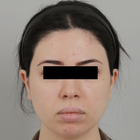
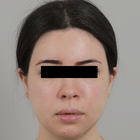
Front view

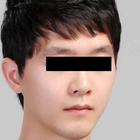
Front view
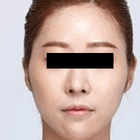
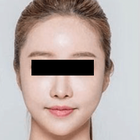
Front view
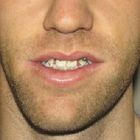

Front view
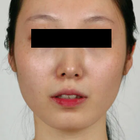
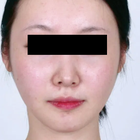
Front view
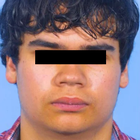
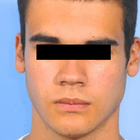
Front view

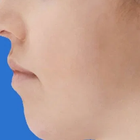
Full-side view
WHY US?
At Medijump, we're making medical easy. You can search, compare, discuss, and book your medical all in one place. We open the door to the best medical providers worldwide, saving you time and energy along the way, and it's all for FREE, no hidden fees, and no price markups guaranteed. So what are you waiting for?

Free

Best Price

Widest Selection

Risk-Free
What you need to know about Jaw Shaping in Seoul
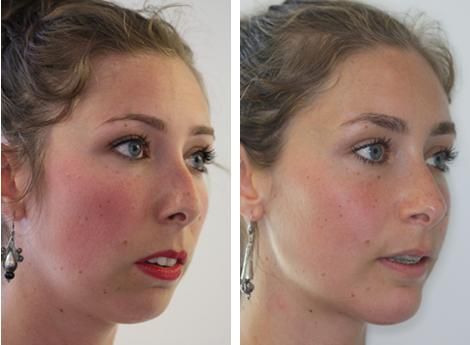
Also known as Mandibular Angle Reduction, V Line Surgery or Jawline Surgery, Jaw Shaping Surgery is performed with the purpose of narrowing the lower part of the face, with particular emphasis on the mandible (lower jaw) and the muscular attachments.
A wide jaw angle can be caused by enlarged muscle, bone, or a combination of the two. A prominent jaw angle or square jaw is considered a masculine trait, particularly in Asian countries. Therefore, many people opt for surgical correction to get their desired look. The surgery can shorten an overly long jaw and change a square-shaped face to an oval shape. Some people with temporomandibular joint (TMJ) disorders, uneven jaws, or jaws that causes pain when chewing might also undergo this surgery to correct pain.
There are several critical elements involved in the surgery, including the angles of the jaw, the body of the mandible, and the shape of the chin. While the procedure is typically performed on women with a square jawline who want a more feminine look, it can be done on both men and women. However, this procedure may not work for people who want to feminize a male’s face since males usually have a taller and longer face. Therefore, a V Line Surgery would only make a face look more elongated.
What does a Jaw Shaping Procedure Involve?
Various developmental, congenital, or some rare disorders such as acromegaly can cause enlarged mandibles, which can be corrected by Jawline Surgery. It is ideal for those with overly square or U-shaped jawline, overly manly jaw shape, bloated cheeks, and double chin. If you are considering V line surgery, you will need to be in a good state of physical and mental health.
Prior to the surgery, you will be examined by X-rays and 3D CT scans. Your surgeon will analyze and evaluate the overall structure of your jaw to create a plan to produce the desired result. You will also need to undergo medical tests such as ECGs to ensure that you don’t have a condition that may put you in danger or compromise the success of the surgery.
Surgery is performed under general anesthetic through tracheal intubation and leaves minimal scarring. You will need to fast for 8 hours before the surgery. Oscillating saws are used to reshape the jaw. The surgery can be performed inside the mouth (intraoral) or from outside the mouth (postauricular). The intraoral approach is the most widely used method. With this approach, an incision is made between the gum and the back of the cheek next to the jaw. Then, the jawline is carved out into their desired shape. A portion of the masseter muscle is shaved off, and the outer portion of the bone is chipped off. This approach is best for patients who aim to narrow their frontal view since the change is subtle and natural.
If the patient wants to change the appearance of the jaw angle from a side view, the overall contour of the bone will need to be changed. This means that the patient needs a full-thickness bone removal. Although it can be done through the intraoral approach, the surgeon’s view during this approach is very limited, which can decrease the precision of the procedure. Therefore, the best approach is from outside of the mouth or postauricular. To get direct access to the bone, the surgeon makes an incision hidden around the ear. This approach can remove a more substantial amount of bone. The recovery time using this approach is also much shorter than the intraoral approach since the swelling stays confined to the neck area.
How Long Should I Stay in Seoul for a Jaw Shaping Procedure?
The typical length of time for Jaw Shaping is usually around 2 hours. Nevertheless, you have to stay in the hospital for around one to two days for initial recovery where you will be monitored to make sure everything is fine. After being discharged, plan to stay in the Seoul for 10 to 14 days or until the surgeon says you can go home. The stitches are generally removed within two weeks after surgery, though this may vary from patient to patient.
What's the Recovery Time for Jaw Shaping Procedures in Seoul?
Immediately after the surgery, you will need to wear a facial mask that presses tightly against the skin around the jaw to keep the post-surgery swelling down. Also, you will not be allowed to eat foods that require chewing because it will delay the recovery and can cause bleeding. If you undergo the intraoral approach, your food intake will be limited for a considerable length of time. You may feel some swelling, numbness, and discomfort around the incision for several days, but the surgeon will prescribe medications to help with the pain.
The recovery period can be different for each individual; some people may be able to go back to their regular routines after seven to ten days, but others may need more time to fully recover. Avoid doing any vigorous activity that increases your blood pressure for several weeks, such as jogging and other exercises. Most of the visible signs, such as swelling and bruising, should disappear within a few weeks. Symptoms such as hematoma and infection are common, and will usually subside within three to six months post-surgery.
What sort of Aftercare is Required for Jaw Shaping Procedures in Seoul?
You must follow your surgeon aftercare instructions strictly to accelerate your recovery and minimalize possible complications. The instruction will likely include the following recommendations:
- Food intake. You may need to consume a liquid diet for a week after surgery as drinking your food is less painful and prevents trauma to the jaw area. You should be able to consume hard foods within one month.
- Oral hygiene. An antibacterial mouth rinse will keep your mouth and incision area clean, which will decrease the possibility of infection.
- Avoid tobacco and alcohol. Smoking and drinking alcohol should be avoided for a while.
- Keep the head elevated. You should keep your head elevated even when you are sleeping as it is the key to reduce swelling.
- Compression bandage. You are recommended to wear a compression bandage at all times for the first three days and while sleeping for the first week or two.
- Avoid strenuous activity. Do not do any heavy lifting or exercise for at least a month. However, do walk around and practice some gentle movement.
- Attend follow up appointments. The surgeon will check your progress to avoid any complications.
What's the Success Rate of Jaw Shaping Procedures in Seoul?
Jaw shaping surgery is a safe procedure when performed by a trained surgeon. Around 94% of patients express their satisfaction with this procedure. However, it is important to have realistic expectations. You should also be aware of the possible risks that this surgery may cause. These risks include infection, asymmetry, seroma, deep vein thrombosis, pulmonary embolism, and hematoma. Partial numbness of the jaw can also happen due to nerve damage.
Are there Alternatives to Jaw Shaping Procedures in Seoul?
If you wish to reshape your jaw but do not want to undergo surgery, there are non-invasive options available. The most popular alternatives are Botox and Dysport, which can effectively contour the jaw by relaxing the appearance of a square jaw. This procedure shrinks the masseter muscle by weakening it. These injectable can also be used to correct facial asymmetry around the jawline area. Since they are non-invasive, you can return to your daily activates right away and they offer a subtler shift in your appearance. However, these techniques are limited to cases in which the masseter is enlarged and may not work as well as V Line Surgery.
Whilst the information presented here has been accurately sourced and verified by a medical professional for its accuracy, it is still advised to consult with your doctor before pursuing a medical treatment at one of the listed medical providers
No Time?
Tell us what you're looking for and we'll reachout to the top clinics all at once
Enquire Now

Popular Procedures in Seoul
Prices Start From $70

Prices Start From $28

Prices Start From $1,945

Prices Start From $275

Recommended Medical Centers in Seoul for Jaw Shaping

- Interpreter services
- Translation service
- Religious facilities
- Medical records transfer
- Medical travel insurance
- Health insurance coordination
- TV in the room
- Safe in the room
- Phone in the room
- Private rooms for patients available

- Interpreter services
- Translation service
- Religious facilities
- Medical records transfer
- Medical travel insurance
- Health insurance coordination
- TV in the room
- Safe in the room
- Phone in the room
- Private rooms for patients available

- Interpreter services
- Translation service
- Religious facilities
- Medical records transfer
- Medical travel insurance
- Health insurance coordination
- TV in the room
- Safe in the room
- Phone in the room
- Private rooms for patients available

- Interpreter services
- Translation service
- Religious facilities
- Medical records transfer
- Medical travel insurance
- Health insurance coordination
- TV in the room
- Safe in the room
- Phone in the room
- Private rooms for patients available

- Interpreter services
- Translation service
- Religious facilities
- Medical records transfer
- Medical travel insurance
- Health insurance coordination
- TV in the room
- Safe in the room
- Phone in the room
- Private rooms for patients available

- Interpreter services
- Translation service
- Religious facilities
- Medical records transfer
- Medical travel insurance
- Health insurance coordination
- TV in the room
- Safe in the room
- Phone in the room
- Private rooms for patients available

- Interpreter services
- Translation service
- Religious facilities
- Medical records transfer
- Medical travel insurance
- Health insurance coordination
- TV in the room
- Safe in the room
- Phone in the room
- Private rooms for patients available

- Interpreter services
- Translation service
- Religious facilities
- Medical records transfer
- Medical travel insurance
- Health insurance coordination
- TV in the room
- Safe in the room
- Phone in the room
- Private rooms for patients available

- Interpreter services
- Translation service
- Religious facilities
- Medical records transfer
- Medical travel insurance
- Health insurance coordination
- TV in the room
- Safe in the room
- Phone in the room
- Private rooms for patients available

- Interpreter services
- Translation service
- Religious facilities
- Medical records transfer
- Medical travel insurance
- Health insurance coordination
- TV in the room
- Safe in the room
- Phone in the room
- Private rooms for patients available
Jaw Shaping in and around Seoul
About Seoul
Seoul is the capital city of South Korea and is one of the most affluent cities in Asia with high per capita income. Seoul is a city of differences as you can find anything from ancient monuments and palaces to modern skyscrapers. Every year the city attracts over 10 million tourists from different parts of the world. While some visit Seoul to enjoy its rich culture, others come to experience the fascinating metropolitan vibe, large numbers of medical tourists visit this busy city to undergo various medical procedures for cheaper prices and to enjoy the Korean hospitality. As per reports from the South Korean Ministry of Health & Welfare, the number of medical tourists in 2016 increased to 364,000, which is 23% more than in 2015. Some of the more popular procedures sought-after in Seoul are gynecology related treatments, stem cell therapy, treatments in neurology & endocrinology, laser treatments, transplants, and cardiology.
According to the Ministry of Health and Welfare, most medical tourists are from China, Uzbekistan, UAE, Japan, and Canada. Seoul is dynamically emerging as one of the most preferred destinations for medical tourism. The city proudly houses one JCI accredited hospital. The other top-rated medical hospitals include the Severance Hospital, Asan Medical Center, Seoul National University Hospital, MizMedi Women's Hospital. The world-class hospitals comprise of VIP rooms, exceptional medical facilities, and highly-reputed physicians. Doctors are fluent in English, Korean, Japanese, and French.
Popular Areas in Seoul
The beautiful River Han flows through the heart of the city. It divides Seoul into North and South and you will find most of the ancient palaces and historical sites in the North. The Southside is quite modern and trendy with neighborhoods like Gangnam which is also the business hub of the city. It is also the residential part of the city with many apartments, and shopping malls.
- River Han: Is the favorite location for both locals and tourists. Here, you can enjoy indulging in exciting water activities such as windsurfing, water skiing, fishing, sailing, and swimming. The banks of the river are the perfect place to lounge and see the lights of the city at night.
- Banpo Bridge: Connects the districts Seocho and Yongsan and It was the first double-deck bridge built in South Korea and is covered with 10000 lights and the Rainbow Fountain's colored water rains down the side of the bridge.
- Gangnam: It is the most trendy neighborhood and is home to Asia's largest shopping mall, COEX, and several high-end restaurants.
- Hongdae: Four Korean Universities lie close to the neighborhood. Hongdae houses a number of theme-based restaurants and an array of boutiques that cater to the needs of college-goers. Several music venues and glitzy nightclubs make it a perfect place to enjoy the vibrant nightlife.
- Myeongdong: Is the best and the largest shopping destination in Korea. It is a shopping mega where you can find clothes, cosmetics, stylish handbags, shoes and accessories, and Jewelry at affordable prices.
Weather and Climate in Seoul
As Seoul lies close to the coast of the Yellow Sea, the climate is continental. Summer and Winter are the two distinct seasons in Seoul. Summer is sultry, hot, and rainy, whereas winter is cold and sunny. The transitional periods are the spring and autumn, which are mild and pleasant.
- Winter: November to February. The average temperature is around 0°C during winter. The cold air blows in from Asia and during the night time, the temperature can drop to -20°C but it rarely snows during winter.
- Spring: March to May. Spring is mild and it rains occasionally.
- Summer: June to August. Seoul receives about 80 mm of rainfall during the summer season. July is the wettest month of the year. The temperature can rise to 35°C during the hot summer days.
- Autumn: September-October. Autumn is pleasant and rainfall gradually decreases during these months.
Getting around in Seoul
Incheon International Airport lies 48 km west of Seoul. It is the largest in the country and one of the busiest airports in the world. The airport is luxurious with an ice-skating rink, casinos, and spas. The airport operates several domestic and international flights to varied parts of the world.
Seoul has one of the finest public transportation systems in the world.
- Seoul Metropolitan subway: It is the fastest and cheapest mode of transportation. There is a total of 22 lines in operation and it costs 0.44$ for a single journey. You can buy tickets at the vending machines found in all subway stations.
- Seoul public buses: There are four different types of buses running in Seoul, each one covering different routes. The cost varies from 0.92$ to $1.63, depending on the bus type and the distance traveled.
- Taxis: Are expensive and are ideal for a large group of people. Regular, deluxe, jumbo, and International taxis are available. The major differences being the size and fare.
Tourist visa in Seoul
South Korea exempts the citizens of 117 countries from obtaining a valid tourist visa to enter the country. Australia, Chile, Greece, Germany, Hungary, Italy, Mexico, Russia, Switzerland, UK, US are some of the visa-exempted countries. They can stay visa-free for a maximum of 90 days.
Citizens of countries like India, China needs to apply for a tourist visa with all the required documents. The visa fee comes to around $30.
Additional Information
- The official currency of South Korea is the Korean Republican Won (KRW). One US dollar is approximately equivalent to 1149 KRW.
- You can find ATMs across the City. Some accept foreign cards and dispense cash. You can exchange your currencies to KRW in banks and money exchange booths.
- Hangul is the national and official language of South Korea. Koreans who are under the age of 40 years understand and speak English better than the rest of the locals.
- Most people in Korea are not affiliated with any religion. The same holds true in Seoul. Though, a small number of people practice Confucianism and Buddhism.
- Some of the public holidays in Seoul include New Year's Eve, Korean New Year, Buddha's birthday, Constitution day, Harvest festival, Hangeul day and Christmas.
Popular Searches
- Plastic Surgery in Thailand
- Dental Implants in Thailand
- Hair Transplant in Thailand
- Breast Augmentation Thailand
- Gastric Sleeve in Thailand
- Gender Reassignment Surgery in Thailand
- Laser Hair Removal in Bangkok
- Botox in Bangkok
- Dermatology in Bangkok
- Breast Augmentation in Bangkok
- Coolsculpting in Bangkok
- Veneers in Turkey
- Hair Transplant in Turkey
- Rhinoplasty in Turkey
- Stem Cell Therapy in Mexico
- Rhinoplasty in Mexico
- Liposuction in Mexico
- Coolsculpting in Tijuana
- Rhinoplasty in Korea
- Scar Removal in Korea
- Gastric Sleeve in Turkey
- Bone Marrow Transplant in India
- Invisalign in Malaysia
- Plastic Surgery in the Dominican Republic
- Tummy Tuck in the Dominican Republic
- Plastic and Cosmetic Surgery in Poland
- Rhinoplasty in Poland
- Hair Implant in Poland
- Dental Implants in Poland
- IVF in Turkey











